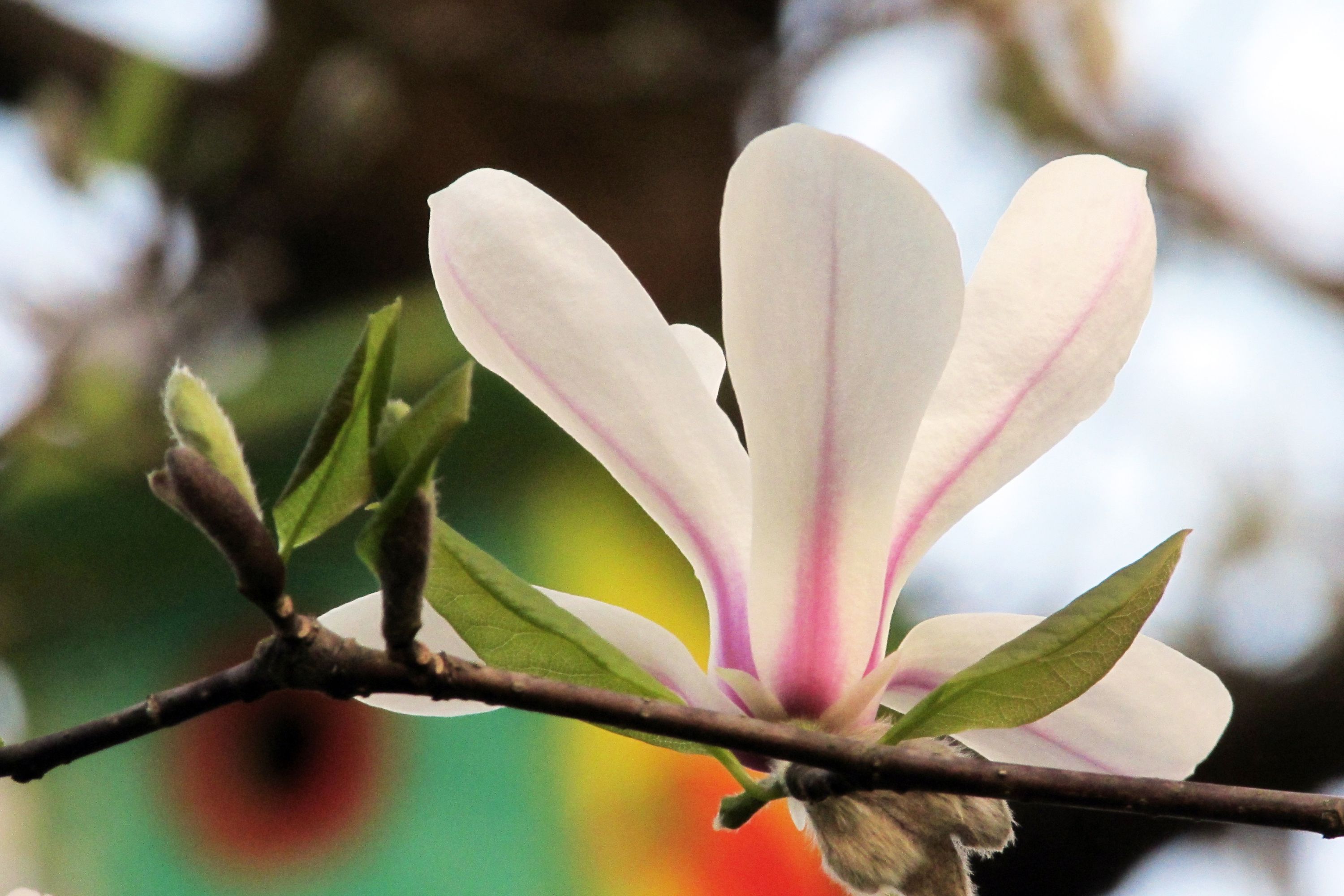Umbrella magnolia
(Magnolia tripetala)

Description
Magnolia tripetala, commonly known as umbrella magnolia or simply umbrella tree, is a species of flowering tree that belongs to the family Magnoliaceae. It is a native species of North America, commonly found in the southeastern region of the United States. This article will provide a detailed description of Magnolia tripetala, including its physical features, habitat, cultivation, and its various uses. Physical Characteristics Magnolia tripetala is a deciduous tree that can grow up to 12 meters (39 feet) tall, with a broad and spreading crown. It has a straight trunk, which is typically 30 to 60 centimeters (12 to 24 inches) in diameter, and is covered in a grayish-brown bark that is smooth when the tree is young, but becomes rough and furrowed with age. The leaves of Magnolia tripetala are large, with a length of up to 60 centimeters (24 inches) and a width of up to 30 centimeters (12 inches). They are simple, alternate, and have a broadly elliptical shape. The leaves are dark green on the upper surface and paler underneath. They are also slightly hairy. In autumn, the leaves turn a bright yellow before falling from the tree. The flowers of Magnolia tripetala are large and showy, with a diameter of up to 30 centimeters (12 inches). They are creamy white, with six to nine petals that are thick and waxy. The flowers are arranged in terminal clusters, and they bloom in late spring to early summer. The fragrance of the flowers is sweet and citrus-like, and it attracts pollinators such as beetles and bees. Habitat Magnolia tripetala is a native species of North America and is primarily found in the southeastern region of the United States. Its natural range extends from southern Indiana and Ohio to western North Carolina and Georgia, and it can also be found in parts of Alabama, Arkansas, Illinois, Kentucky, Missouri, Tennessee, and Virginia. The tree grows in a variety of habitats, including moist woodlands, stream banks, and other areas with well-drained soil that is rich in organic matter. It is often found in the understory of larger trees, but it can also grow in open areas with full sunlight exposure. Magnolia tripetala is hardy in USDA zones 5 to 9, and it can tolerate a wide range of soil types and moisture levels. However, it does prefer moist, well-drained soil that is rich in organic matter, and it thrives in areas with high humidity and moderate temperatures. While Magnolia tripetala is primarily found in its native range, it has also been introduced to other parts of the world as an ornamental plant. It is commonly grown in gardens and parks in Europe, Asia, and other regions with similar climates. Cultivation Magnolia tripetala is a popular ornamental tree, and it is commonly grown in gardens and parks for its beautiful flowers and attractive foliage. The tree prefers a moist, well-drained soil that is rich in organic matter, and it should be planted in a location that receives full to partial sunlight exposure. The tree is relatively low-maintenance, and it does not require regular pruning. However, it should be watered during dry periods, especially in the first few years after planting. Propagation of Magnolia tripetala is typically done through seeds, which should be sown in the fall or spring. The seeds should be planted in a well-draining soil mix, and they should be kept moist until they germinate. The seedlings can be transplanted into their permanent location once they are large enough to handle. Uses Magnolia tripetala has several uses, including ornamental and medicinal purposes. Ornamental Uses: Magnolia tripetala is commonly grown as an ornamental plant in gardens and parks. Its large, showy flowers make it a popular choice for landscaping. The tree can be used as a focal point or as part of a mixed border. Its attractive foliage, which turns a bright yellow in autumn, also makes it a desirable addition to the landscape. Medicinal Uses: In traditional medicine, various parts of the Magnolia tripetala tree have been used for their medicinal properties. The bark of the tree has been used to treat fevers and malaria, while the leaves have been used as a tonic for the liver and gallbladder. The root bark of the tree has also been used to treat rheumatism and other inflammatory conditions. The active compounds in Magnolia tripetala include magnolol and honokiol, which have been found to have anti-inflammatory, anti-tumor, and neuroprotective effects. These compounds have also been studied for their potential use in treating anxiety, depression, and other mood disorders. In addition, the wood of Magnolia tripetala is used in woodworking, as it is strong, durable, and has a fine texture. It is commonly used for making furniture, cabinets, and other decorative items. Conservation Status The conservation status of Magnolia tripetala is currently listed as "Least Concern" by the International Union for Conservation of Nature (IUCN). This means that the species is not currently at risk of extinction and its populations are stable. Magnolia tripetala is a native species of North America and is found in a wide range of habitats, including moist woodlands and stream banks. While the tree has been affected by deforestation and habitat destruction in some areas, it is still relatively widespread and common throughout its range. Conservation efforts for Magnolia tripetala include protecting its natural habitat and promoting its cultivation as an ornamental plant. Planting Magnolia tripetala in gardens and parks can help to increase its populations and ensure its continued survival.
Taxonomic tree:







